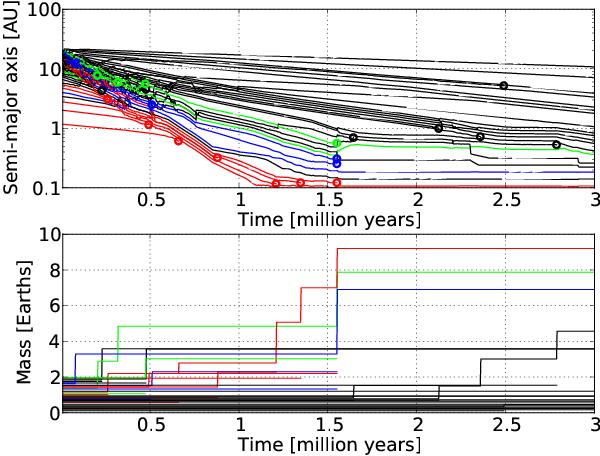Fig. 4

Orbital evolution (top panel) and growth (bottom panel) of planetary embryos in a simulation that produced a system of hot super-Earths. Each circle represents a collision. Red, green, and blue lines trace the evolution of the embryos that collide to form the three more massive final planets. All other embryos are shown in black. Embryos migrate inward toward the inner edge of the disk at 0.1 AU, where collisions are enhanced due to strong convergence. The inner edge stops embryos from migrating further in (although this is not always the case; see below).
Current usage metrics show cumulative count of Article Views (full-text article views including HTML views, PDF and ePub downloads, according to the available data) and Abstracts Views on Vision4Press platform.
Data correspond to usage on the plateform after 2015. The current usage metrics is available 48-96 hours after online publication and is updated daily on week days.
Initial download of the metrics may take a while.


